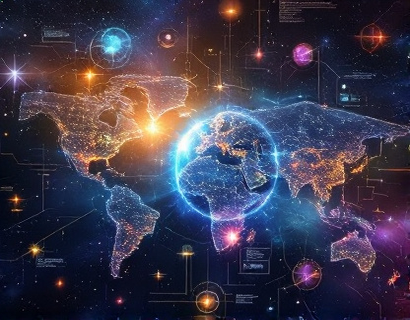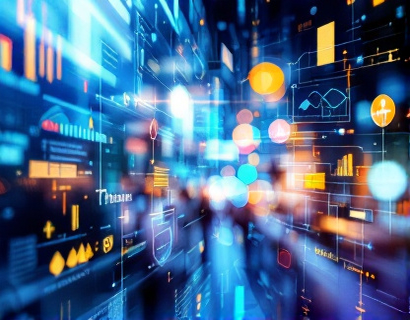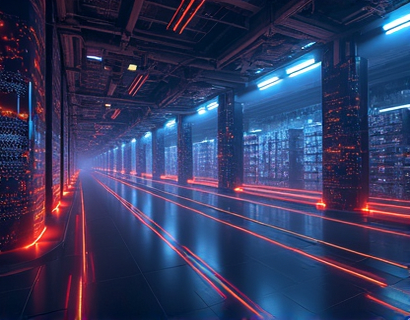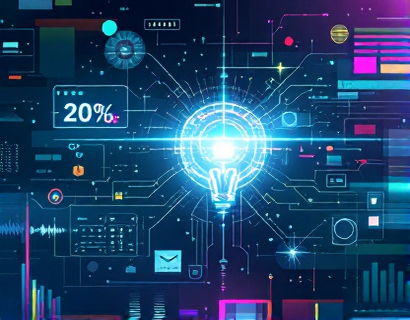Revolutionizing Digital Transformation: The Synergy of Crypto and AI
The intersection of cryptocurrency and artificial intelligence (AI) is catalyzing a new era of digital transformation, redefining user engagement and driving unprecedented innovation. This synergy is not just about merging two cutting-edge technologies but about creating advanced ecosystem solutions that enhance connectivity, foster growth, and elevate user satisfaction. As we delve into this topic, it's essential to understand the foundational roles that both crypto and AI play in this revolution.
Understanding Cryptocurrency and Its Role in Digital Ecosystems
Cryptocurrency, often seen as digital or virtual currency, operates on blockchain technology, a decentralized ledger that ensures transparency, security, and immutability. Beyond being a medium of exchange, cryptocurrencies serve as a foundational element in building trustless and decentralized ecosystems. These ecosystems are crucial for fostering innovation, as they allow developers and users to interact without intermediaries, reducing costs and increasing efficiency.
The decentralized nature of cryptocurrencies enables the creation of smart contracts, self-executing contracts with the terms directly written into code. Smart contracts automate and enforce agreements, reducing the need for intermediaries and enhancing trust among participants. This automation and trustlessness are pivotal in building robust and scalable digital ecosystems.
AI: The Brain Behind the Ecosystem
Artificial intelligence, on the other hand, brings intelligence, adaptability, and predictive capabilities to digital ecosystems. AI algorithms can process vast amounts of data, identify patterns, and make decisions or predictions with minimal human intervention. In the context of cryptocurrency and digital ecosystems, AI can optimize various processes, from transaction verification and security enhancement to user experience personalization.
Machine learning, a subset of AI, plays a crucial role in enhancing the security and efficiency of blockchain networks. For instance, AI can detect and mitigate fraudulent activities by analyzing transaction patterns and identifying anomalies. This proactive approach to security is essential in maintaining the integrity of decentralized systems.
Enhanced User Engagement Through Advanced Ecosystem Solutions
The combination of cryptocurrency and AI leads to the development of advanced ecosystem solutions that significantly enhance user engagement. These solutions leverage the strengths of both technologies to create seamless, intuitive, and rewarding user experiences.
One key area is personalized user interfaces and experiences. AI algorithms can analyze user behavior and preferences to tailor content and services, making the digital experience more relevant and engaging. For example, a decentralized social media platform can use AI to curate a feed based on a user's interests, interactions, and preferences, thereby increasing user retention and satisfaction.
Moreover, gamification elements powered by AI can be integrated into digital ecosystems to boost user engagement. By using AI to design dynamic and adaptive reward systems, platforms can motivate users to participate more actively. For instance, a decentralized gaming platform can use AI to adjust difficulty levels and reward distributions based on user performance, keeping users engaged and coming back for more.
Connectivity and Interoperability: Bridging the Gap
Connectivity and interoperability are critical for the success of digital ecosystems. Cryptocurrency and AI work synergistically to bridge the gaps between different platforms and services, creating a more cohesive and integrated digital environment.
Blockchain technology facilitates cross-platform interactions by providing a common, decentralized infrastructure. This infrastructure allows different ecosystems to communicate and exchange value seamlessly. AI enhances this connectivity by enabling smart and intelligent routing of data and transactions, optimizing the flow of information and resources across the ecosystem.
Interoperability also extends to the integration of various AI services within the ecosystem. For example, a decentralized finance (DeFi) platform can integrate AI-driven analytics tools to provide users with insights into market trends, risk assessments, and investment strategies. This integration not only enriches the user experience but also adds significant value to the ecosystem.
Growth and Scalability: Driving Innovation
The synergy between cryptocurrency and AI is not only about enhancing user engagement but also about driving growth and scalability. Advanced ecosystem solutions powered by these technologies can scale more efficiently and sustainably compared to traditional centralized systems.
AI-driven optimization techniques can improve the performance and scalability of blockchain networks. For instance, AI can be used to optimize consensus mechanisms, reducing energy consumption and increasing transaction throughput. This optimization is crucial for the widespread adoption of blockchain technology, as it addresses some of the key challenges related to scalability and sustainability.
Moreover, AI can facilitate the development of new services and applications within the ecosystem, fostering innovation. By analyzing user needs and market trends, AI can identify gaps and opportunities, guiding developers in creating solutions that meet real-world demands. This data-driven approach to innovation ensures that the ecosystem remains relevant and competitive.
Enhanced Security and Trust
Security and trust are paramount in digital ecosystems, and the combination of cryptocurrency and AI offers robust solutions to these challenges. Blockchain's inherent security features, combined with AI-driven security measures, create a multi-layered defense against threats.
AI can enhance security by continuously monitoring the ecosystem for potential vulnerabilities and threats. Machine learning algorithms can detect unusual patterns and anomalies, enabling proactive measures to prevent breaches and attacks. Additionally, AI can improve the security of smart contracts by identifying and mitigating vulnerabilities in the code, ensuring that agreements are executed as intended.
Trust is also bolstered through transparency and verifiability provided by blockchain. Users can independently verify transactions and contract executions, reducing the need for intermediaries and building trust within the ecosystem. AI can further enhance this trust by providing auditable and transparent analytics, allowing users to understand and trust the data and insights provided.
Case Studies: Real-World Applications
To better understand the practical implications of this synergy, let's explore a few real-world applications where cryptocurrency and AI are transforming digital experiences.
One notable example is the decentralized healthcare ecosystem. Here, AI-powered diagnostic tools integrated with blockchain can securely store and share patient data, ensuring privacy and interoperability. Smart contracts can automate the consent and data-sharing process, streamlining healthcare services and improving patient outcomes. AI-driven analytics can also help in predicting disease outbreaks and optimizing resource allocation.
Another example is the decentralized content creation and distribution platform. AI can personalize content recommendations, ensuring users discover relevant and engaging content. Blockchain ensures that creators are fairly compensated for their work, with smart contracts automatically distributing revenue based on predefined rules. AI can also monitor and enforce copyright and intellectual property rights, protecting creators and maintaining the integrity of the platform.
Challenges and Future Prospects
Despite the numerous benefits, the integration of cryptocurrency and AI in digital ecosystems is not without challenges. Regulatory uncertainties, technical complexities, and user adoption barriers are some of the key hurdles that need to be addressed.
Regulatory frameworks are still evolving, and the lack of clear guidelines can hinder the widespread adoption of these technologies. Collaboration between regulators, developers, and industry stakeholders is essential to create a conducive environment for innovation.
Technically, scaling blockchain networks and ensuring the interoperability of different systems remain significant challenges. AI can play a crucial role in addressing these issues by optimizing network performance and facilitating seamless interactions between diverse platforms.
Looking ahead, the future of digital ecosystems powered by cryptocurrency and AI is promising. As technology advances and adoption increases, we can expect more sophisticated and user-centric solutions. The convergence of these technologies will continue to drive innovation, enhancing connectivity, growth, and user satisfaction in the digital landscape.










































